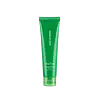What's inside
What's inside
 Key Ingredients
Key Ingredients

 Benefits
Benefits

 Ingredients Side-by-side
Ingredients Side-by-side

Water
Skin ConditioningPropanediol
SolventGlycerin
HumectantNiacinamide
SmoothingPanthenol
Skin ConditioningCentella Asiatica Leaf Extract
Skin ConditioningSodium Hyaluronate
HumectantPantolactone
HumectantXanthan Gum
EmulsifyingButylene Glycol
HumectantAcrylates/C10-30 Alkyl Acrylate Crosspolymer
Emulsion StabilisingGlyceryl Acrylate/Acrylic Acid Copolymer
HumectantPhenoxyethanol
PreservativeEthylhexylglycerin
Skin ConditioningSodium Hydroxide
BufferingGlycyrrhiza Uralensis Root Extract
Skin ConditioningPentylene Glycol
Skin ConditioningPhospholipids
Skin ConditioningEpimedium Sagittatum Leaf/Stem Extract
AntioxidantSphingolipids
EmollientSodium Benzoate
MaskingCitric Acid
BufferingPotassium Sorbate
PreservativeWater, Propanediol, Glycerin, Niacinamide, Panthenol, Centella Asiatica Leaf Extract, Sodium Hyaluronate, Pantolactone, Xanthan Gum, Butylene Glycol, Acrylates/C10-30 Alkyl Acrylate Crosspolymer, Glyceryl Acrylate/Acrylic Acid Copolymer, Phenoxyethanol, Ethylhexylglycerin, Sodium Hydroxide, Glycyrrhiza Uralensis Root Extract, Pentylene Glycol, Phospholipids, Epimedium Sagittatum Leaf/Stem Extract, Sphingolipids, Sodium Benzoate, Citric Acid, Potassium Sorbate
Water
Skin ConditioningGlycerin
HumectantButylene Glycol
HumectantDipropylene Glycol
Humectant1,2-Hexanediol
Skin ConditioningTrehalose
HumectantHydrogenated Polydecene
EmollientDiglycerin
HumectantAcrylates/C10-30 Alkyl Acrylate Crosspolymer
Emulsion StabilisingAmmonium Acryloyldimethyltaurate/Vp Copolymer
Tromethamine
BufferingDipotassium Glycyrrhizate
HumectantXanthan Gum
EmulsifyingEthylhexylglycerin
Skin ConditioningPhormium Tenax Leaf Water
AntioxidantGlyceryl Acrylate/Acrylic Acid Copolymer
HumectantDisodium EDTA
Propanediol
SolventSecale Cereale Seed Extract
AbrasiveTriticum Vulgare Germ Extract
Skin ConditioningCentella Asiatica Extract
CleansingPolyglutamic Acid
Skin ConditioningWater, Glycerin, Butylene Glycol, Dipropylene Glycol, 1,2-Hexanediol, Trehalose, Hydrogenated Polydecene, Diglycerin, Acrylates/C10-30 Alkyl Acrylate Crosspolymer, Ammonium Acryloyldimethyltaurate/Vp Copolymer, Tromethamine, Dipotassium Glycyrrhizate, Xanthan Gum, Ethylhexylglycerin, Phormium Tenax Leaf Water, Glyceryl Acrylate/Acrylic Acid Copolymer, Disodium EDTA, Propanediol, Secale Cereale Seed Extract, Triticum Vulgare Germ Extract, Centella Asiatica Extract, Polyglutamic Acid
 Reviews
Reviews

Ingredients Explained
These ingredients are found in both products.
Ingredients higher up in an ingredient list are typically present in a larger amount.
Acrylates/C10-30 Alkyl Acrylate Crosspolymer is a synthetic polymer. It is used to thicken and improve the texture of products. Due to its properties, it can prevent water and oil ingredients from separating.
Butylene Glycol (or BG) is used within cosmetic products for a few different reasons:
Overall, Butylene Glycol is a safe and well-rounded ingredient that works well with other ingredients.
Though this ingredient works well with most skin types, some people with sensitive skin may experience a reaction such as allergic rashes, closed comedones, or itchiness.
Learn more about Butylene GlycolEthylhexylglycerin (we can't pronounce this either) is commonly used as a preservative and skin softener. It is derived from glyceryl.
You might see Ethylhexylglycerin often paired with other preservatives such as phenoxyethanol. Ethylhexylglycerin has been found to increase the effectiveness of these other preservatives.
Glycerin is already naturally found in your skin. It helps moisturize and protect your skin.
A study from 2016 found glycerin to be more effective as a humectant than AHAs and hyaluronic acid.
As a humectant, it helps the skin stay hydrated by pulling moisture to your skin. The low molecular weight of glycerin allows it to pull moisture into the deeper layers of your skin.
Hydrated skin improves your skin barrier; Your skin barrier helps protect against irritants and bacteria.
Glycerin has also been found to have antimicrobial and antiviral properties. Due to these properties, glycerin is often used in wound and burn treatments.
In cosmetics, glycerin is usually derived from plants such as soybean or palm. However, it can also be sourced from animals, such as tallow or animal fat.
This ingredient is organic, colorless, odorless, and non-toxic.
Glycerin is the name for this ingredient in American English. British English uses Glycerol/Glycerine.
Learn more about GlycerinGlyceryl Acrylate/Acrylic Acid Copolymer is made up of glycerin and polyacrylic acid. It helps hydrate your skin as a humectant.
This ingredient forms a hydrogel that delivers moisturizing, water-based ingredients to the skin. It is also used to thicken a product and to give it a smooth texture.
Acrylic acid itself is toxic, but the polymer form (this ingredient) is too large to penetrate skin, making it non-toxic.
Learn more about Glyceryl Acrylate/Acrylic Acid CopolymerPropanediol is an all-star ingredient. It softens, hydrates, and smooths the skin.
It’s often used to:
Propanediol is not likely to cause sensitivity and considered safe to use. It is derived from corn or petroleum with a clear color and no scent.
Learn more about PropanediolWater. It's the most common cosmetic ingredient of all. You'll usually see it at the top of ingredient lists, meaning that it makes up the largest part of the product.
So why is it so popular? Water most often acts as a solvent - this means that it helps dissolve other ingredients into the formulation.
You'll also recognize water as that liquid we all need to stay alive. If you see this, drink a glass of water. Stay hydrated!
Learn more about WaterXanthan gum is used as a stabilizer and thickener within cosmetic products. It helps give products a sticky, thick feeling - preventing them from being too runny.
On the technical side of things, xanthan gum is a polysaccharide - a combination consisting of multiple sugar molecules bonded together.
Xanthan gum is a pretty common and great ingredient. It is a natural, non-toxic, non-irritating ingredient that is also commonly used in food products.
Learn more about Xanthan Gum